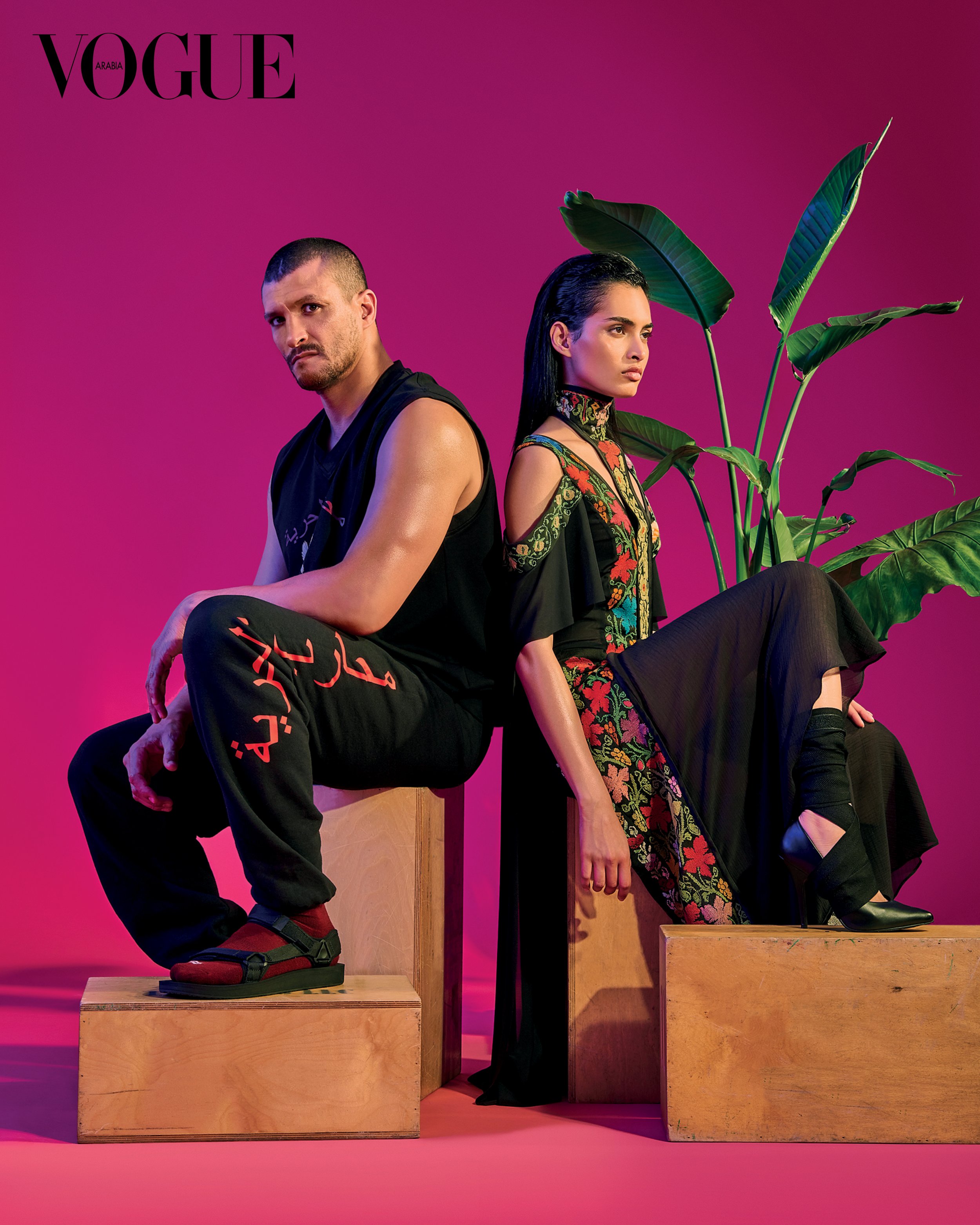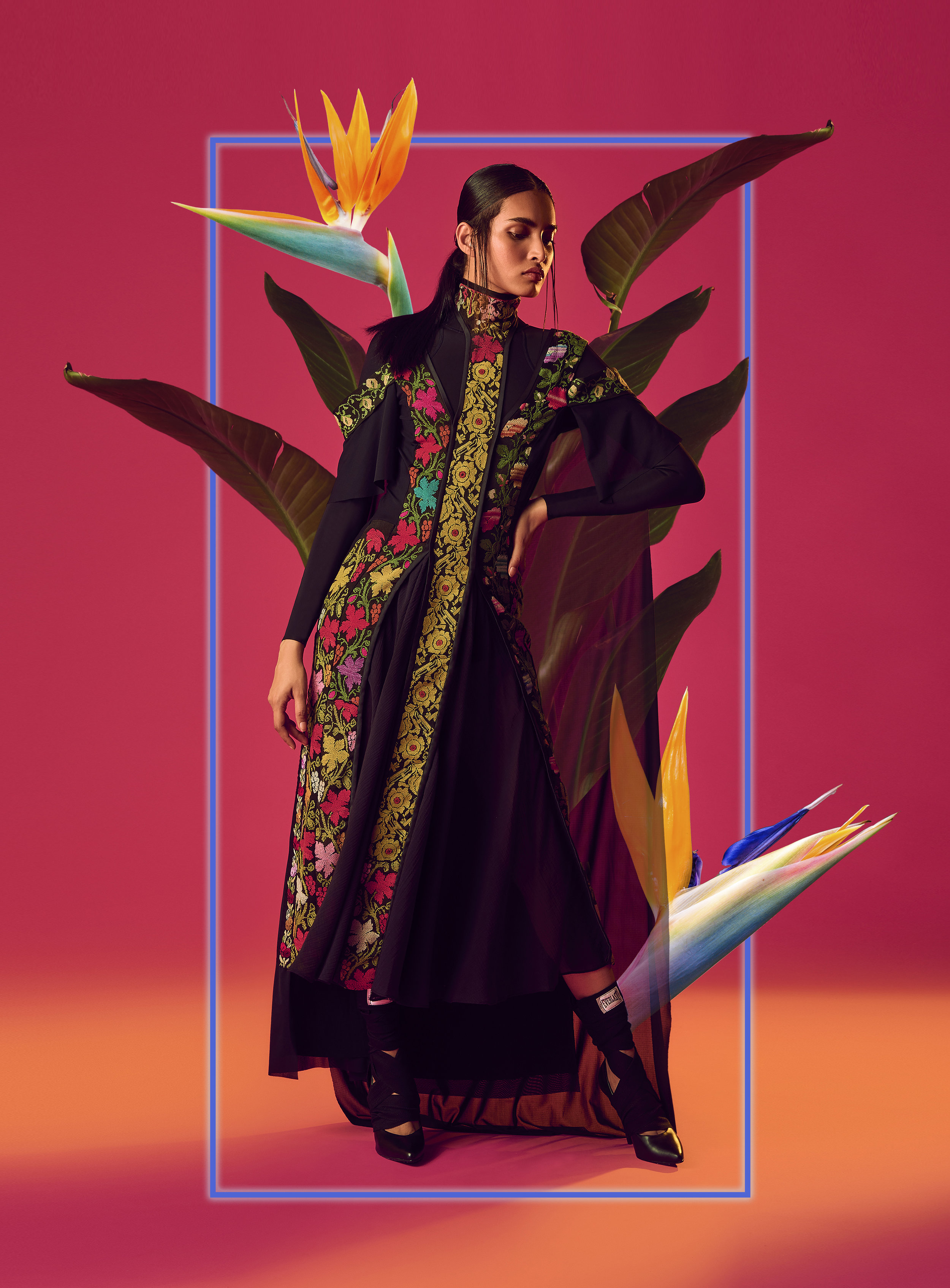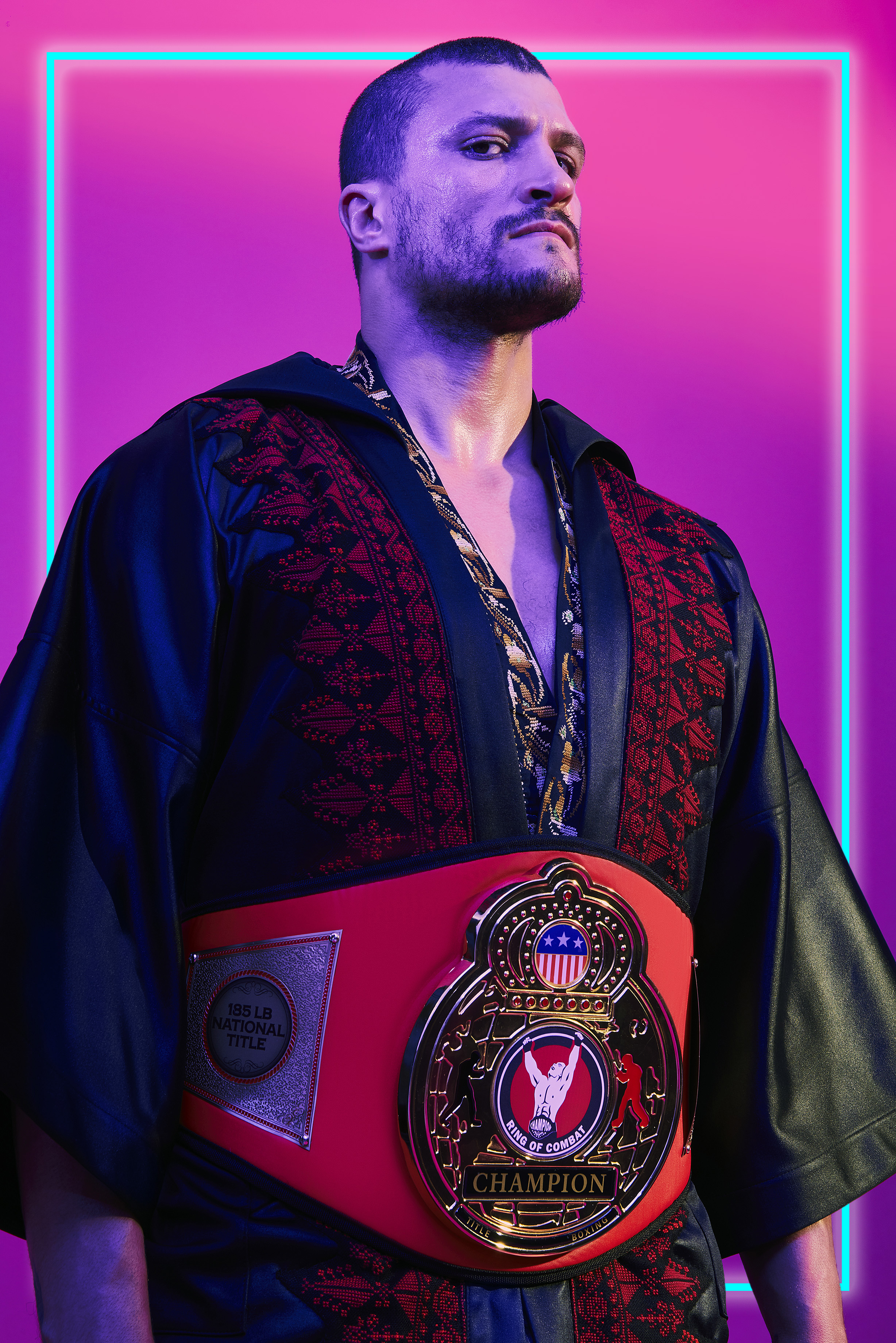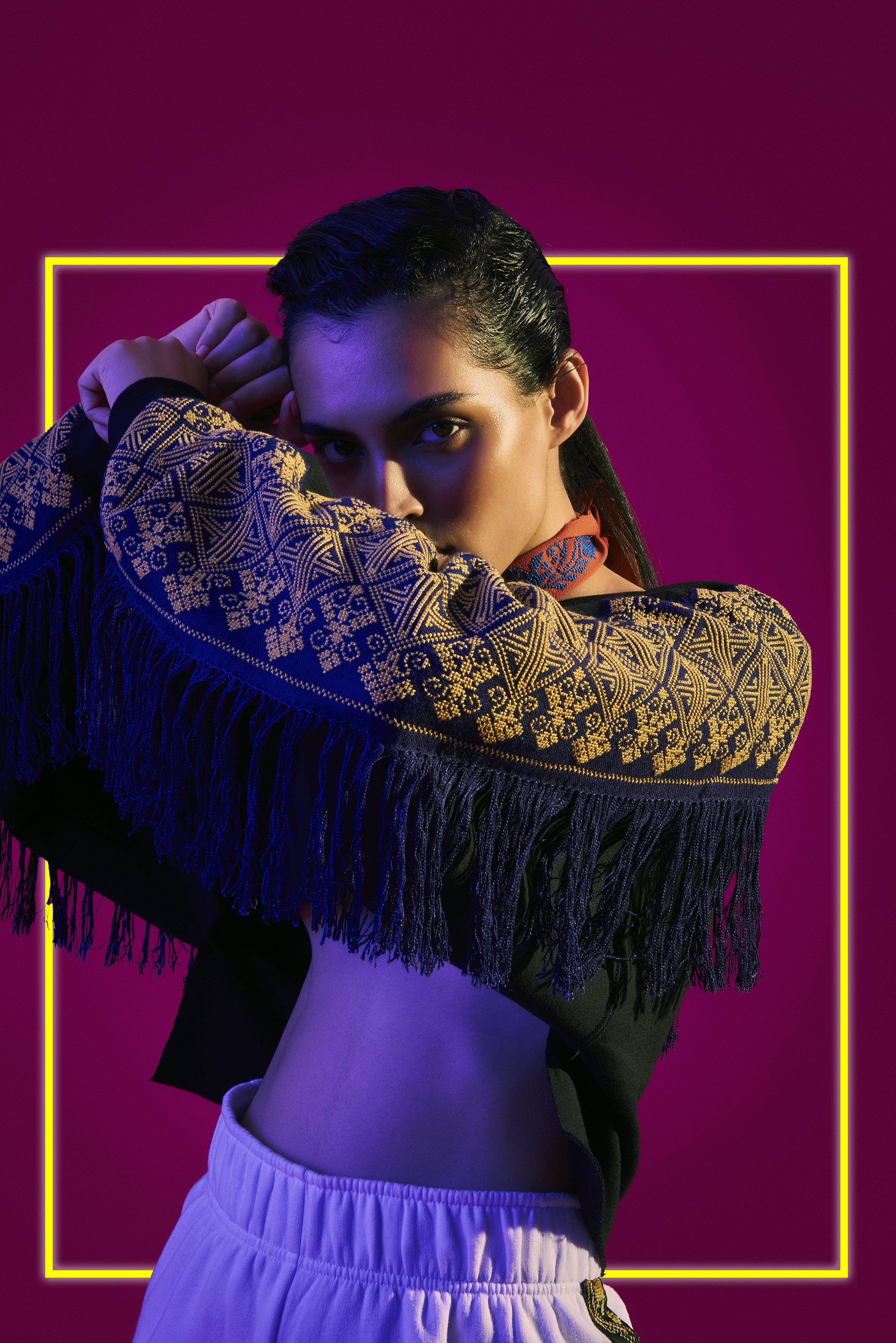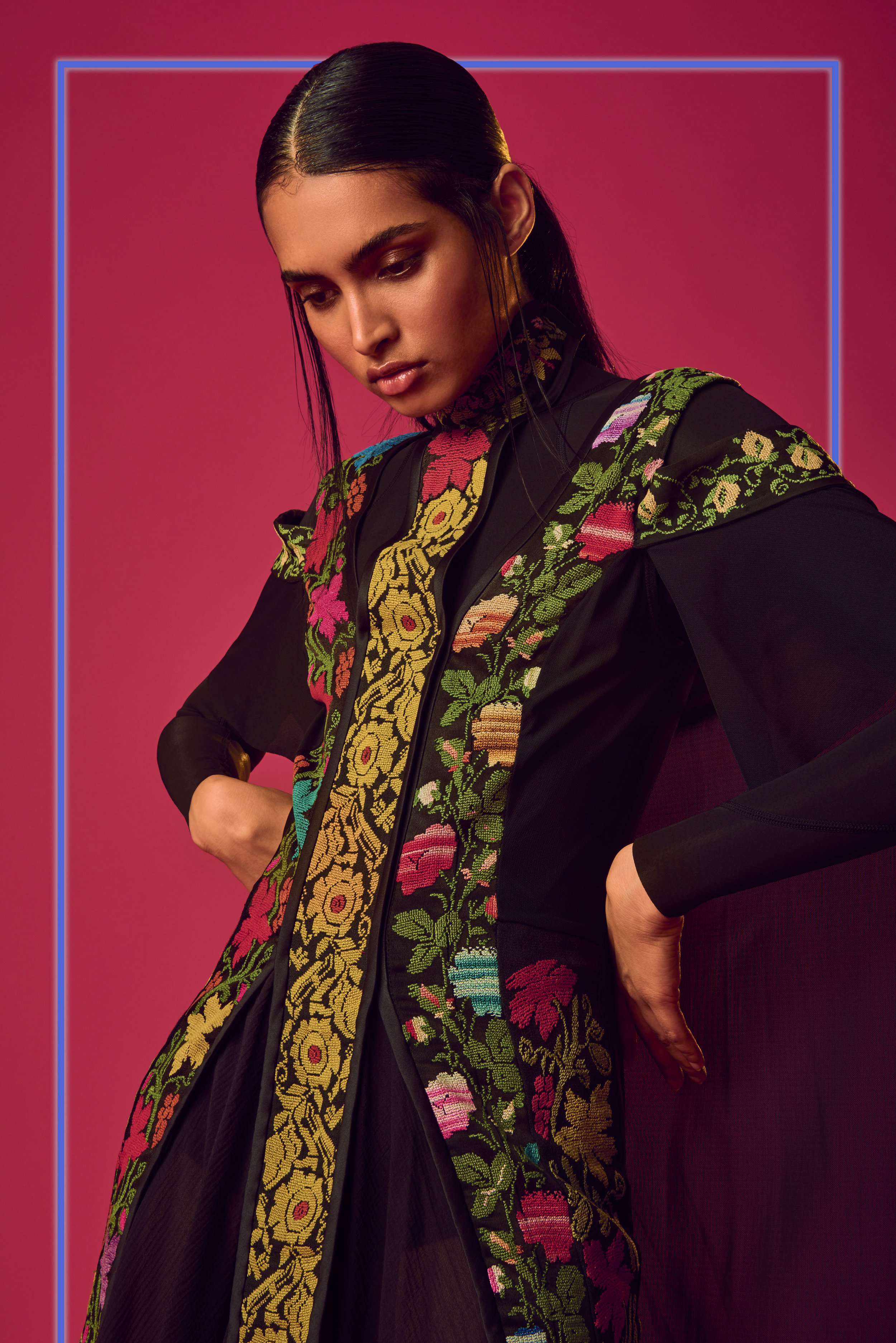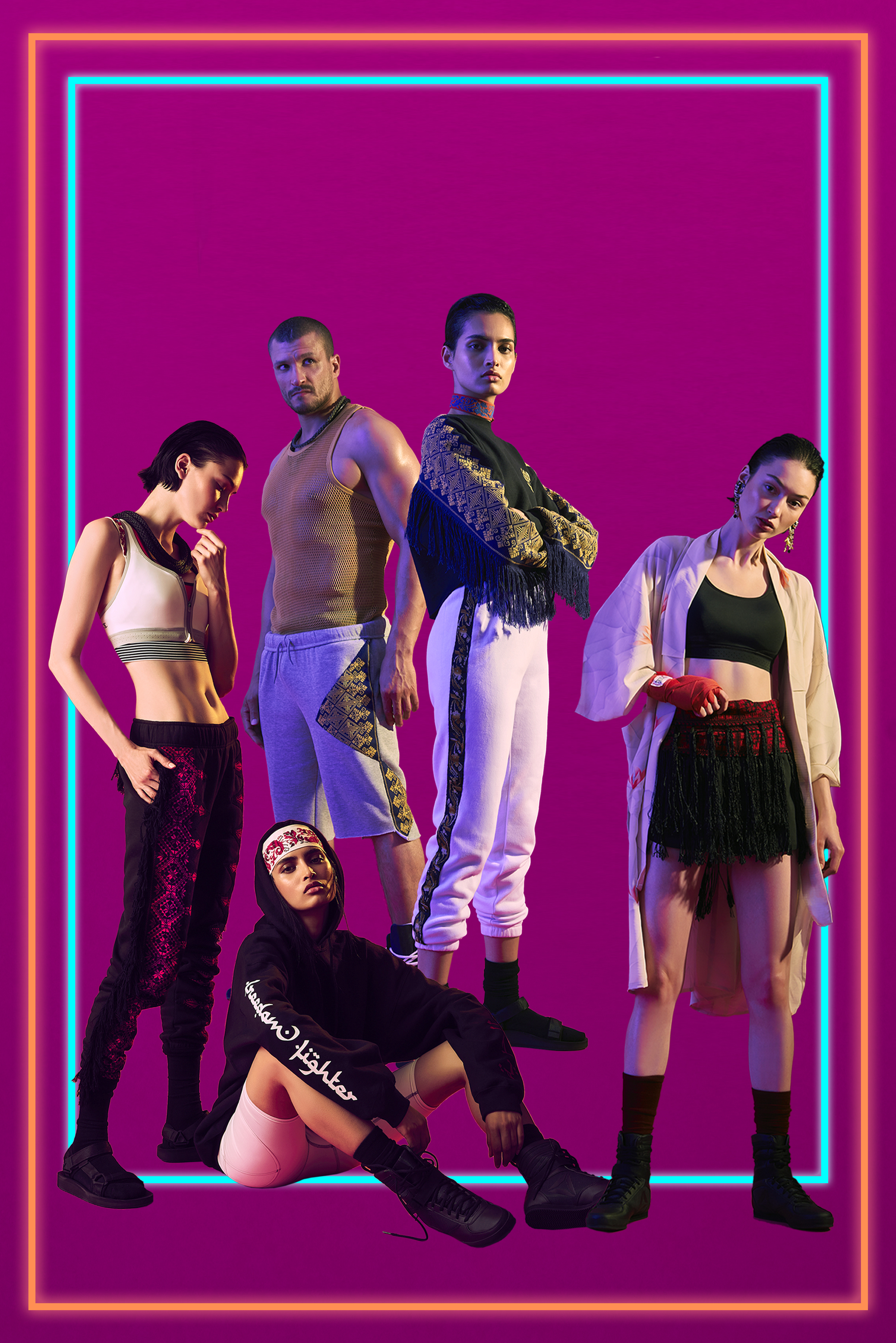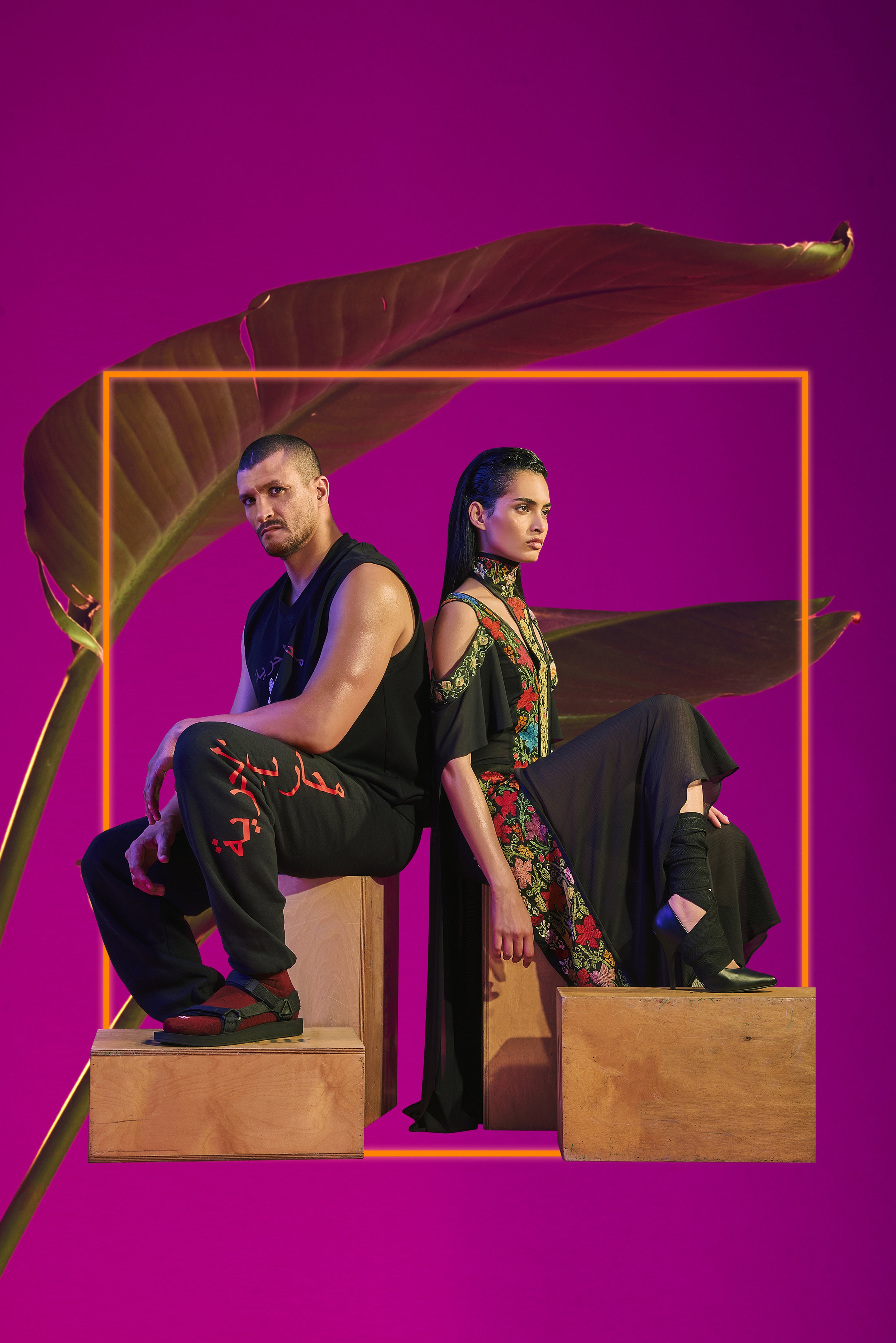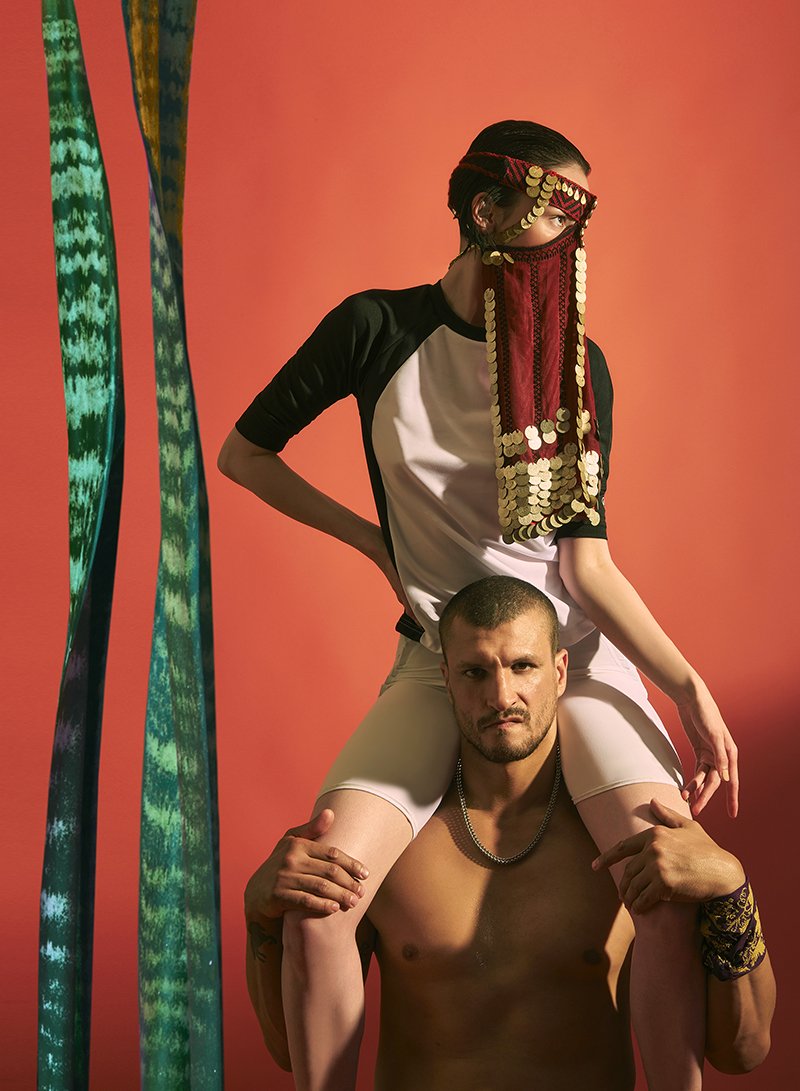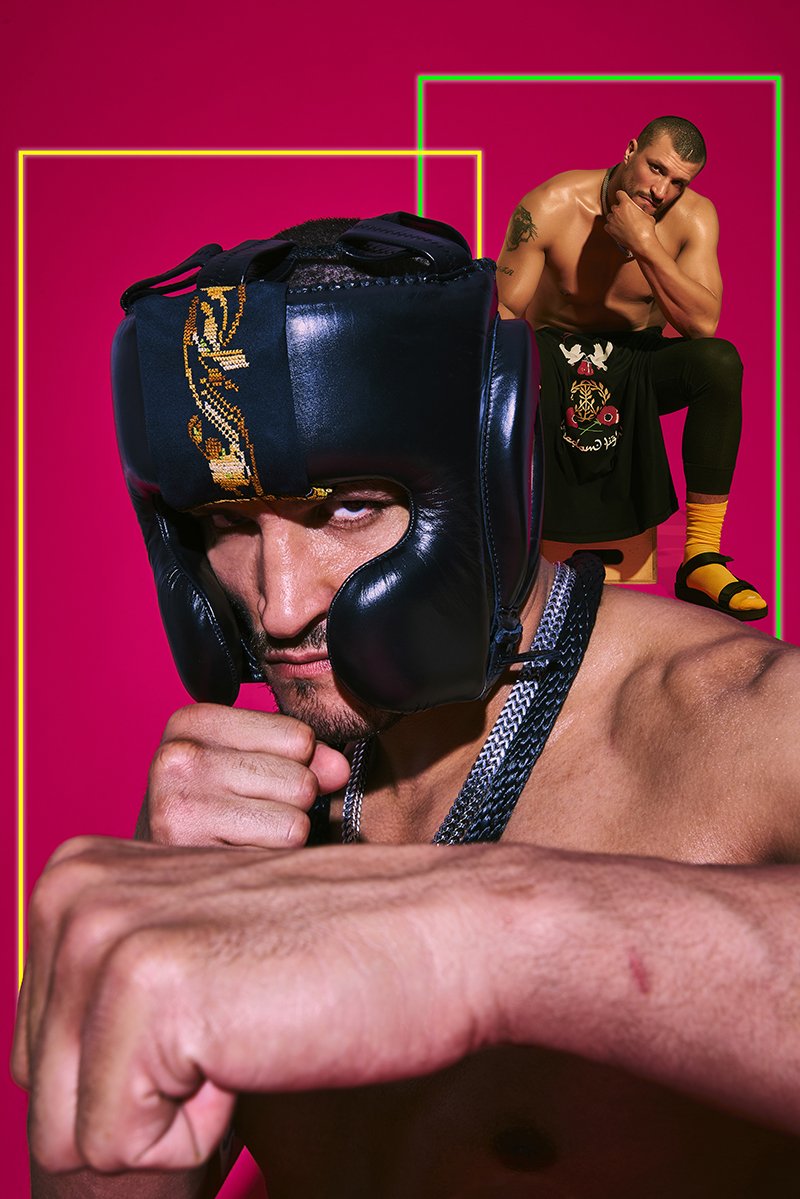About
She has been drawn to traditional Palestinian clothing and textiles since her youth. After studying Fashion and Textile design at the Academy of Art University in San Francisco, inspired by her family history, she felt compelled to bring positive change to the world using fashion as her medium. In 2016, she was invited to design a modern interpretation of a traditional Palestinian dress that was showcased at the United Nations headquarters in New York, commemorating the International Day of Solidarity with the Palestinian People in the exhibit “Palestinian Embroidery: Threads of Continuity, Identity, and Empowerment”. Suzy used vintage remnants of Palestinian embroidery to complete the dress.
Her new collection, Freedom Fighter, is a political and humanitarian expression, implementing indigenous fabrics and innovative textile design to pay homage to the past with eyes to the future. The collection is primarily athletic wear, unpretentious and practical. The trims of traditional fabrics that decorate the sleeves and collars are hand-embroidered by Palestinian women refugees. “Freedom Fighter” is printed in both Arabic and English text using bold, uncomplicated typography.
The centerpiece of the collection is a boxing robe adorned with traditional Palestinian textiles and a crest designed by Suzy. The coat of arms contains three emblems: Doves, universal symbols of peace, branches from olive trees, cornerstones of Palestinian agriculture and heritage, and poppy flowers, honoring the many lives lost in the pursuit of freedom for the Palestinian people. The crest and robe together make a clear statement relatable to all oppressed peoples of the world: We have to fight for our freedom.
A little history behind the making of Freedom Fighter
As a creative and as an activist I always had a strong desire to make a positive and powerful impact through my work.
In 2014 I had the privilege of meeting a woman from unwra in Gaza, who met me in Ramallah at my cousin’s house. I purchased every piece of embroidery she had, which were beautiful hand-embroidered shawls.
In 2015 I was fortunate enough to meet hanan munnayer , an author of a beautiful book on Palestinian embroidery, she’s also a collector and curator. I was in awe of her beautiful collection and she asked if I was interested in purchasing some scraps of old Palestinian embroidery. She also asked if I could create a modern-day gown using these scraps and said that if it was approved by the un panel here in NY, it would be on display in an exhibit about Palestinian embroidery called Palestinian embroidery: threads of continuity, identity, and empowerment”. It was approved and was on display for a month along with a couple of shawls the women in Gaza embroidered. It was so rewarding to give them a stage and shine a light on their beautiful creations, this was a very proud moment for me and my family.
This was the launching pad for my creative path of repurposing vintage Palestinian embroidery.
This has led me to create pieces that people can relate to, like sportswear and other modern pieces. I’m giving a new life to these beautiful Palestinian artifacts. The tattered pieces are my favorite as they show a life lived, proof of our existence and one of the most beautiful forms of resistance.
In April 2014 I had been in touch with a woman from UNWRA who is in charge of training women how to embroider using the traditional Palestinian technique of Tatreez, which is also a huge reliable source of income for their families. I was lucky enough to meet her, she had a two-hour window to take a UN shuttle to meet me at my cousin's house in Ramallah. I bought every piece of embroidery that she had, they were all hand embroidered by Gazan refugees. It gives me great pleasure to have given some of these pieces a platform for their work to be displayed at the UN here in NYC. This is one of the shawls that the women in Gaza hand embroidered.
Shawl from Gaza displayed at the UN
Embroidered by Women of UNWRA.
Palestinian Embroidery: Threads of Continuity, Identity, and Empowerment
The opening reception night for the exhibit at the UN here in NYC. My dress on the left consists of using vintage Palestinian hand-embroidered remnants from the 1950s, repurposed to create a modern gown.
November 30, 2016
UN invitation
for the Palestinian Embroidery Exhibit.
Freedom Fighter Collection History
Suzy Tamimi aims to use Tatreez as her weapon in bringing about awareness and sharing the beauty of Palestine.
Every piece of Tatreez speaks of resilience, celebration, and mourning, they take us through time, they are pieces of our history. They are some of Palestine’s greatest history books made up of our ancestors’ stitches.
Tamimi’s main mission is to preserve as many of these stitches as possible via innovation and sustainability.
The Freedom Fighter collection is a political and humanitarian expression, implementing indigenous fabrics and innovative textile design to pay homage to the past with eyes to the future. The collection is primarily athletic wear, unpretentious and practical.
“Arab culture has been demonized so much by our western media and I want to shine a different light on it. At first my colleagues were unsure about the title. That it may be aggressive, that it may elicit violence. For me it notes determination and the ability to never back down. That one should fight for truth. At my core I’m a humanitarian and the title “freedom fighter”got me thinking about boxing and the fashion associated with it. I love how streetwear can be fearless and rebellious and I wanted to fuse that strength with some beautiful elements of my culture. “
Suzy Tamimi
is a first-generation Palestinian/American fashion designer based in New York. Raised in California, her parents instilled in her a strong Palestinian identity, keeping her connected to her roots. They came to the United States in the mid-seventies in hopes of raising a family and living a better life.




